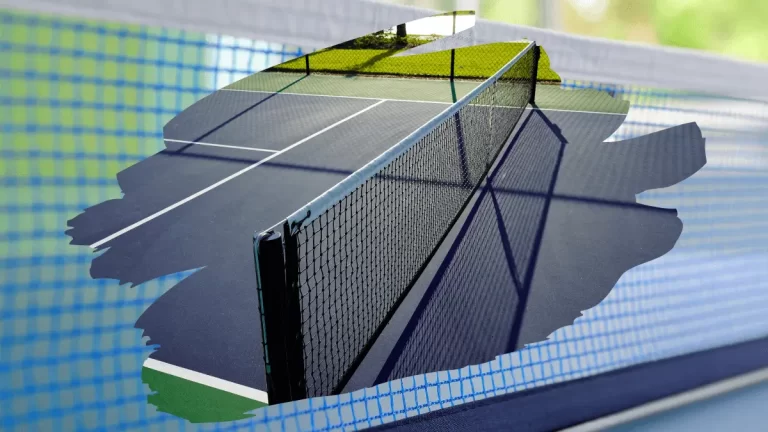Tennis String Tension 2025
As you step onto the tennis court, your racket becomes an extension of yourself, and within it lies a hidden power waiting to be harnessed. At the core of this power lies a crucial but often underestimated factor: tennis string tension.
It’s not merely a number in pounds or kilograms; it’s the heartbeat of your racket, dictating the outcome of every serve, volley, and groundstroke.
In this article, we’re diving deep into tennis string tension.
Discussing its complexities and giving you the knowledge to find that elusive balance for your string and racket.
Understanding Tennis String Tension
Before we dive into anything further, let’s begin with the basics. Tennis string tension, often expressed in pounds (lbs) or kilograms (kg), represents the force with which the strings are pulled within the racket frame.
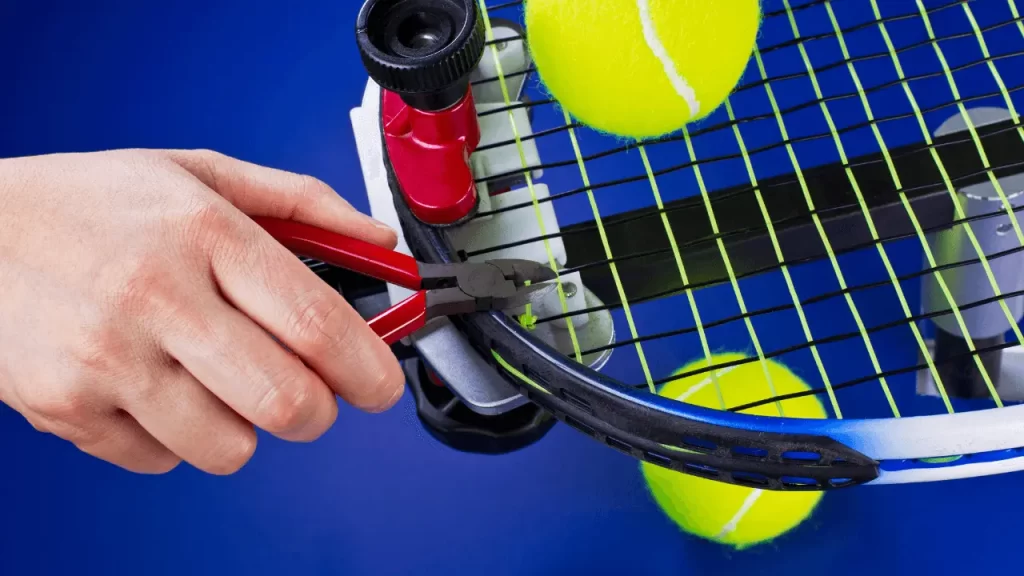
The tension transforms a lifeless racket into a dynamic weapon, impacting your game’s power, control, and comfort. The range typically spans from 40 lbs (18 kg) to 65 lbs (29.4 kg), providing a broad spectrum of possibilities.
Factors Affecting String Tension Choice
When it comes to tennis string tension, it’s not a one-size-fits-all scenario. Many factors have to work, and understanding them is critical for improving your performance on the court.
String Material
String material is pivotal in determining how your racquet responds to each swing. Different materials offer distinct characteristics, and knowing how they impact your game is essential.
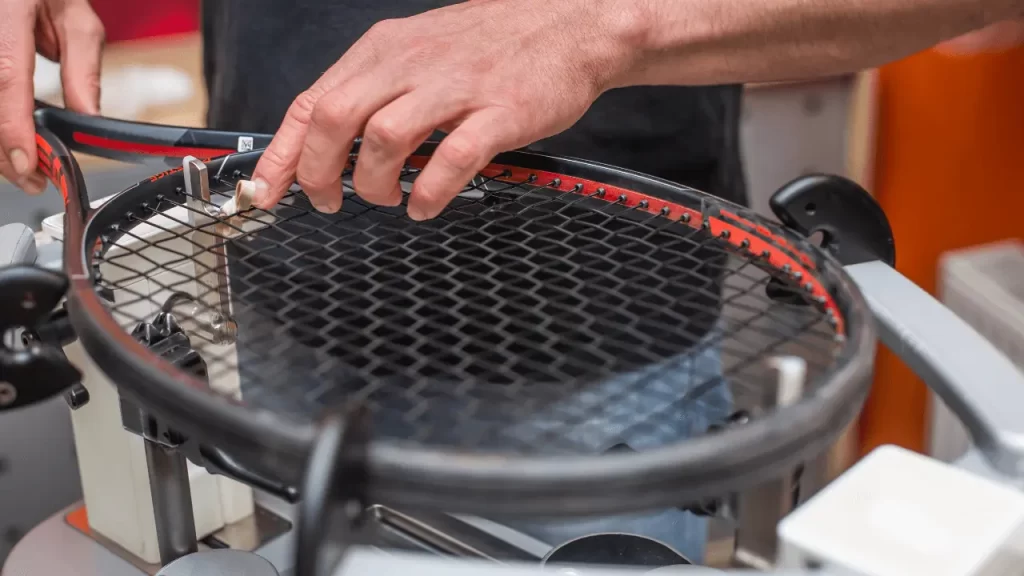
1. Impact of String Material on Performance: The choice of string material directly affects your racket’s playability. Whether it’s the gut’s natural feel, polyester’s durability, or nylon’s versatility, each material has unique qualities.
2. General Rules for Tension Rates Based on Materials: Some general guidelines for string tension are based on the material and the gauge you choose. These guidelines help strike a balance between power and control.
3. Specific Recommendations for Different Materials:
a. Natural Gut: Natural gut strings are prized for comfort and playability. They work well at slightly higher tensions, typically ranging from 50 lbs to 60 lbs (22.6 kg to 27.2 kg). However, if you’re mixing natural gut with other materials, it’s advisable to go slightly lower to prevent breakage.
b. Polyester: Polyester strings have a stiff construction, offering excellent durability and spin potential. For first-time users, starting with slightly reduced tension rates, around 44 lbs to 54 lbs (20 kg to 24.5 kg), is better to find a comfortable zone while still benefiting from their features.
c. Nylon: Nylon strings are a budget-friendly alternative to natural gut. They perform well under various tension rates, so the choice is largely up to the player’s preference.
d. Hybrid: Hybrid strings, a combination of two materials, allow players to mix different features for an all-around performance. While there are recommended tension rates, they can be adjusted based on the material and the player’s preferences. For instance, slightly lower tension is common when using polyester strings mixed with other materials.
e. Multifilament: Multifilament strings mimic the features of natural gut and are popular among players for their versatility. These strings perform best at mid to high-tension rates.
f. Kevlar: Kevlar strings are extremely stiff and known for their durability and heavy spin potential. Due to their construction, it’s recommended to string Kevlar at a lower tension rate for added comfort.
| String Material | Recommended Tension Range (lbs) | Recommended Tension Range (kg) |
|---|---|---|
| Natural Gut | 50 – 60 | 22.7 – 27.2 |
| Polyester | 44 – 54 | 20 – 24.5 |
| Nylon | Varies | Varies |
| Hybrid | Varies | Varies |
| Multifilament | Mid to high 50s | 24.9 and above |
| Kevlar | Lower tension than usual | Lower tension than usual |
Skill Level
Your skill level on the court is a significant determinant in choosing the appropriate string tension. Tailoring it to your skill level can greatly enhance your playing experience.
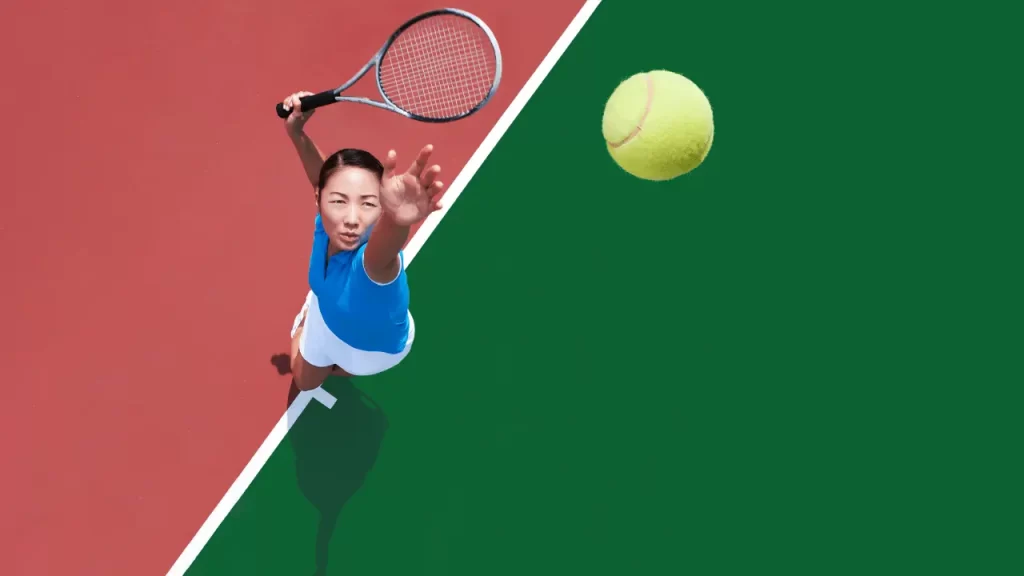
1. How Skill Level Affects String Tension Choice: As a player, your proficiency evolves over time. Beginners, intermediate players, and advanced players each have unique requirements when it comes to string tension.
2. Recommended Tension Rates for Different Skill Levels: Here are the recommended string tension rates based on skill levels:
- Beginners: For players still honing their skills, tension rates between 50 lbs to 51 lbs (22.7 kg to 23 kg) for natural gut and nylon can provide a comfortable starting point.
- Intermediate: As you progress, slightly higher tension rates in the range of 52 lbs to 53 lbs (23.6 kg to 24 kg) for natural gut and nylon can offer more control without sacrificing comfort.
- Advanced: Advanced players seeking precision and control may opt for tension rates between 54 lbs to 55 lbs (24.5 kg to 24.9 kg) for natural gut and nylon.
Tennis String Tension Chart
| Skill Level | Recommended Tension Range (lbs) | Recommended Tension Range (kg) |
|---|---|---|
| Beginners | 50 – 51 | 22.7 – 23 |
| Intermediate | 52 – 53 | 23.6 – 24 |
| Advanced | 54 – 55 | 24.5 – 24.9 |
Game Style
Your playing style and strategic approach to the gameplay play a pivotal role in determining the ideal string tension. Whether you’re a power hitter or a control-focused player, your string tension can complement your style.
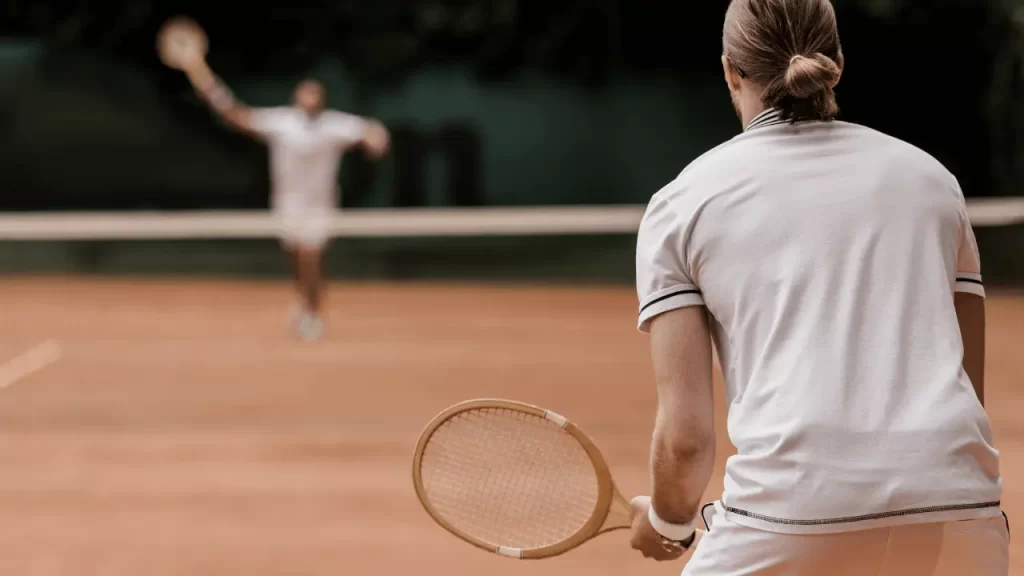
Connection Between String Tension and Playing Style: The correlation between your game style and string tension is clear-cut. Higher tension tends to favor control, while lower tension leans toward power and comfort.
Recommendations for Power and Control-Oriented Players
- Control-Oriented Players: If control is your main priority, you might consider tension rates ranging from 55 lbs to 60 lbs (24.9 kg to 27.2 kg) for natural gut and nylon. This allows you to redirect the ball with confidence and precision.
- Power-Oriented Players: Those aiming for more power may opt for tension rates between 56 lbs to 65 lbs (25.4 kg to 29.4 kg) for natural gut and nylon. This can help you generate powerful shots with less effort.
Remember, finding the right balance between power and control based on your game style is crucial to your success on the tennis court. You can also choose your tennis strings if you know your play style, game, and skill level.
How String Tension Impacts Racket Performance
Understanding how string tension affects your racket’s performance is vital for tailoring your tennis playing experience to your preferences and style. String tension can significantly influence how you perform on the tennis court.
Low String Tension
Low string tension indicates looser strings, which has both advantages and challenges.
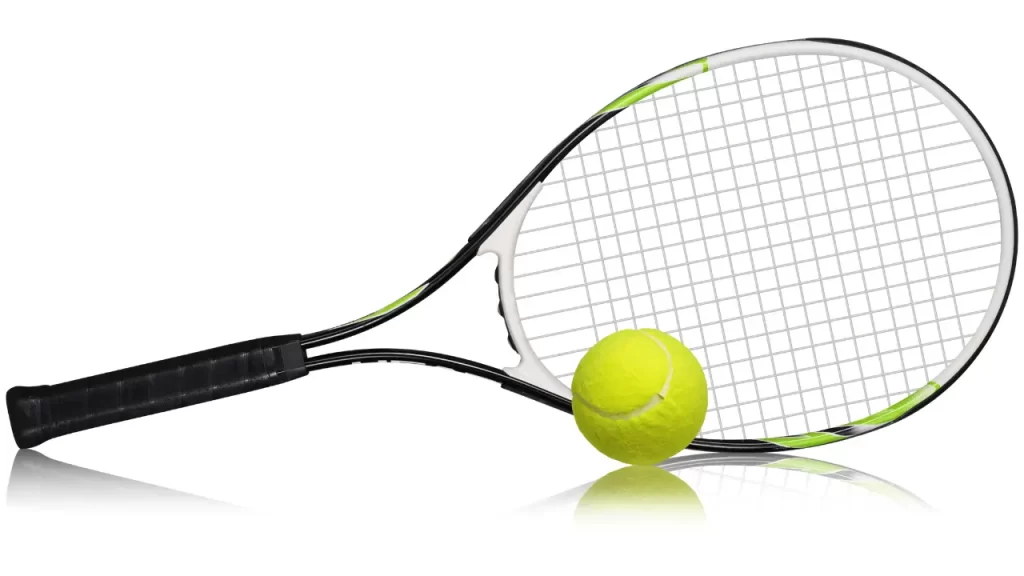
1. Increased Power: Low string tension gives you more power. It’s like a trampoline effect, allowing the ball to bounce off the strings with extra force. Longer shots could be hit with less effort.
2. More Comfort: Lower tension also means more comfort. The strings absorb vibrations, reducing strain on your arm and making the game easier on your body.
3. Less Control: Controlling the ball with loose strings can be harder. It’s like trying to aim a cannon; sometimes, the ball goes where you want, but other times, it can be unpredictable.
High String Tension
High string tension means tighter strings, offering different advantages and disadvantages.
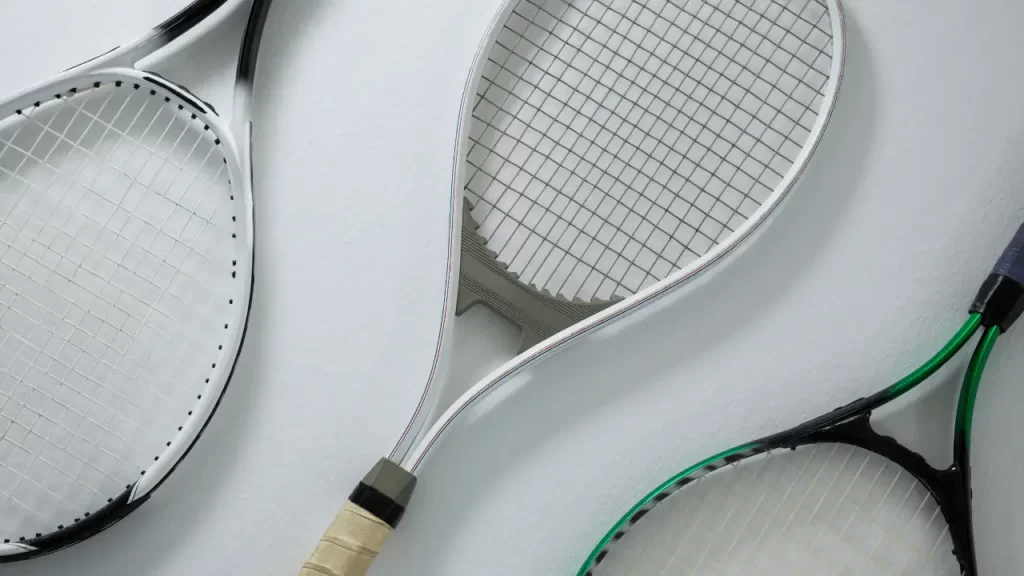
1. Better Control: High tension gives you better control. You can precisely place the ball, making it simpler to strike targets and keep control over your shots.
2. More Spin: Tight strings help you generate more spin. This is great for tricky shots and aggressive play. Spin can make your shots harder for your opponent to handle.
3. Less Power: The trade-off is that high tension reduces power. It’s like a controlled cannon;
you can aim accurately, but the shots may lack the force of low-tension strings.
Finding the Right Balance
The choice of string tension is about finding the balance between comfort and power that suits your playing style. Low tension offers more power and comfort but less control. High tension prioritizes control and spin but sacrifices some power. Experiment with various tensions to see what works best for your game.
String Tension and Durability
Understanding how string tension affects the durability of your tennis strings is essential. Here are the key points:
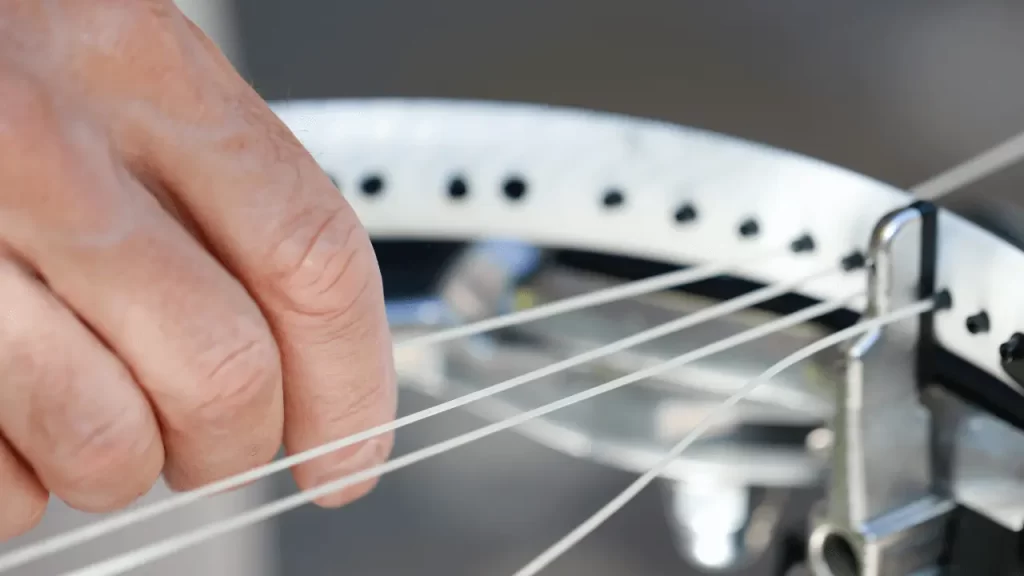
How Tension Affects Durability
Controversy Over String Longevity
String durability isn’t solely determined by tension. Various factors, including your playing style, string type, and court surface, can influence how long your strings last. It’s a complicated topic with no one-size-fits-all solution.
Importance of Experimentation
To find the right tension for durability, consider experimenting with different tension levels based on your playing style, string material, and court conditions. Try to keep track of how long each setup lasts and weigh the trade-offs regarding performance.
String Tension and Topspin
Generating topspin is crucial in tennis. Let’s look at how string tension relates to topspin:
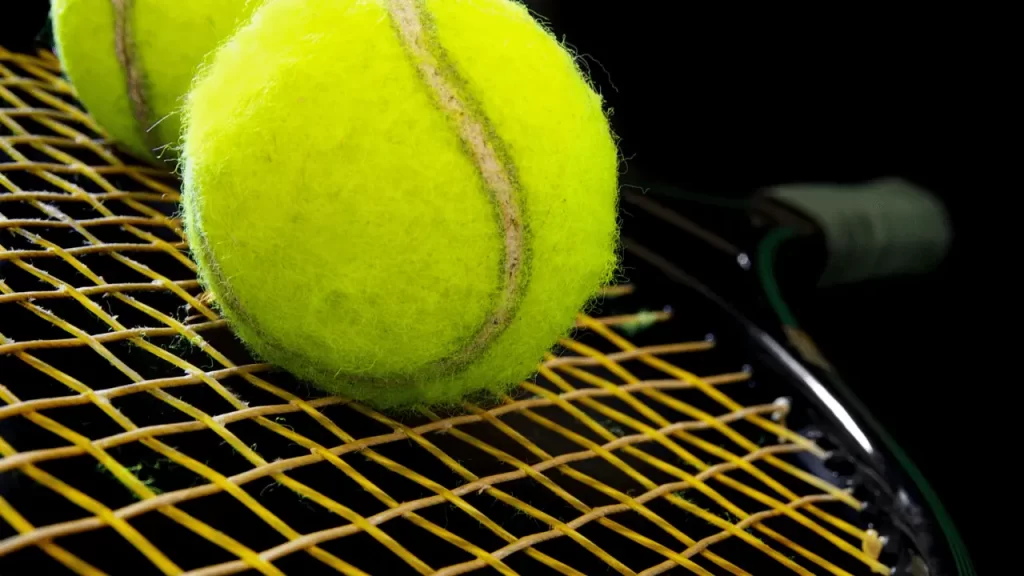
Effect of String Tension on Topspin
Many players wonder if string tension affects their ability to generate topspin. While it plays a role, other factors like technique and racket speed are more critical.
Focus on Technique and Speed
To excel at topspin, improve your technique and increase your racket head speed. These parameters have a more significant impact on topspin than string tension alone.
Polyester Strings for Enhanced Spin
If you’re determined to maximize topspin, consider polyester strings. They have a snap-back effect that enhances spin, even at lower tensions. However, polyester strings are stiffer, which can affect comfort and power. Finding the right tension balance is critical.
Tension Loss
Understanding tension loss in tennis strings is vital. Here’s a simple breakdown:
Inevitable Tension Loss
Tension loss is an unavoidable part of using tennis strings. It occurs gradually and can result in a loss of string tension over time, affecting your racket’s performance.
Preventing Tension Loss
While you can’t stop tension loss completely, there are strategies to slow it down. One effective method is pre-stretching your strings. However, this practice is more common among professional players and may only be practical for some recreational players.
String Type’s Role
The type of string you use can also influence tension maintenance. Natural gut and multifilament strings have more tensile than stiffer polyester strings. As a result, the string material you choose might affect how frequently you need to re-string your racket.
Weather and String Tension
Consider how weather conditions affect string tension:
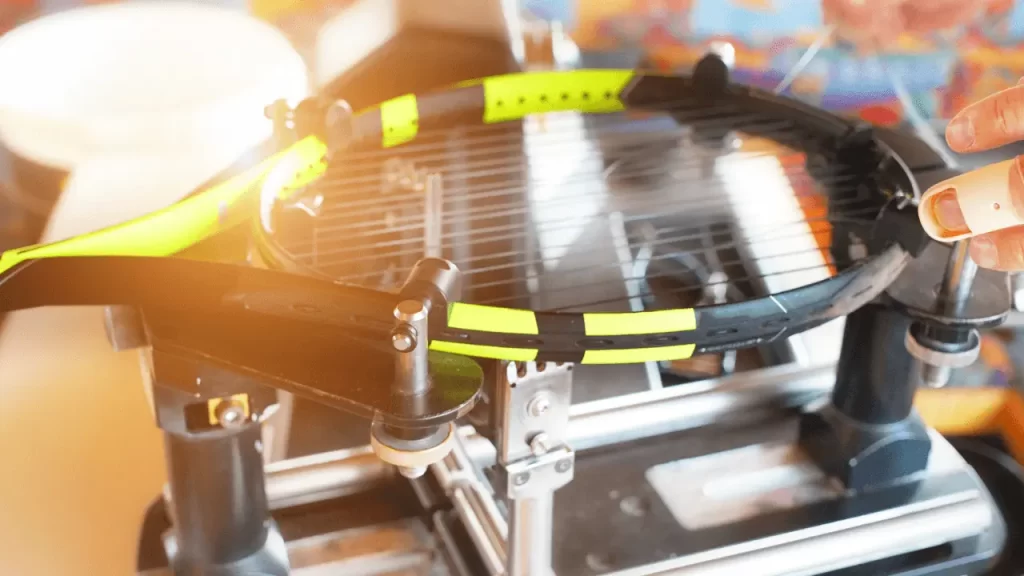
Weather Elements Impact
Weather elements like temperature, humidity, and air density can affect how your strings respond during play. Warm conditions make the strings livelier, while cold weather can make them feel “dead.”
Adjusting for Different Climates
- In warm and sunny weather, you might want to increase your string tension slightly to gain more control.
- In cold conditions, consider a slightly looser string tension to maintain power in your shots.
- In humid climates, lower tension rates can help counteract increased air resistance caused by moisture.
- In dry climates, a higher tension rate provides better control as the ball tends to fly faster with less air resistance.
By adjusting your string tension based on weather conditions, you can optimize your racket’s performance and adapt to varying playing environments.
Best String Tension for Tennis Elbow
Tennis elbow may be a painful condition, and finding the appropriate string tension can drastically improve your playing experience. When dealing with tennis elbow, it’s essential to prioritize comfort above all else. Lowering your string tension can help achieve this goal.
For players with tennis elbow, comfort is key. Lower string tension provides a softer and more plush feeling when the ball strikes the strings.
It also lessens intense vibrations and shock impact, which can aggravate the condition. This softer feel can make a big difference in minimizing discomfort during play.
Regarding recommendations, if you have tennis elbow, consider using a lower string tension that aligns with your comfort level. Additionally, it’s worth looking into rackets specifically designed for players with tennis elbow. These rackets are designed to give extra comfort while lowering the danger of worsening the illness.
Checking String Tension
Checking your string tension is critical to attaining optimal efficiency on the court. Here’s a guide on how to do it:
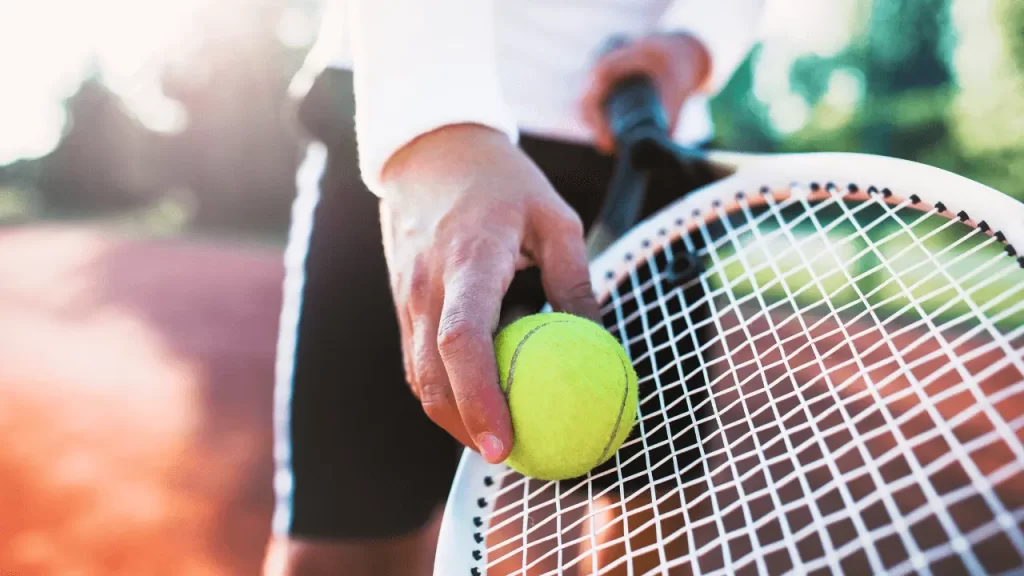
Tennis String Tension Tester
Invest in a tennis string tension tester. This handy instrument allows you to measure the tension of your strings precisely. You can purchase one for personal use or inquire if your local tennis club provides this service.
Measurement after Stringing and Periodic Checks
Measure your string tension right after the stringing process. This first measurement serves as a standard for the tension of your racket. Afterwards, conduct periodic checks to monitor any tension loss. Tension loss is a natural part of the strings’ wear and tear, and it can impact your game.
Significance of Knowing When to Restring
Understanding when it’s time to re-string your racket is crucial for maintaining consistent performance. Your game may be affected as your strings age and experience tension loss. Once the tension drops significantly from your baseline measurement, it’s a clear sign that it’s time to string your racket. Keeping your strings at the proper tension allows you to perform at your best on the court.
Professional Player Preferences
Professional tennis players, known for their precision and skill, often have specific string tensions that suit their playing style. Here are some examples of string tensions used by the pros:
Types String Tensions Professionals Use
1. Rafael Nadal: Known for his powerful game, Nadal uses a string tension of around 55 lbs (25 kg) with polyester strings, striking a balance between power and control.
2. Roger Federer: Federer prefers a tension of 55 lbs (25 kg) with a hybrid string setup. This choice allows him to customize his racket’s performance to match his versatile playing style.
3. Serena Williams: Williams, one of the greatest female players, opts for a tension of 66 lbs (29.9 kg) with natural gut strings, emphasizing control and comfort.
4. Novak Djokovic: Djokovic’s racket is strung at around 59 lbs (26.8 kg) with a hybrid setup, offering him the control and spin needed for his consistent baseline play.
Emphasis on Personal Comfort and Safety
It’s essential to note that professional players’ string tensions are highly personalized and based on their playing styles and preferences.
While these tensions work for them, it’s equally important for recreational and amateur players to prioritize their comfort and safety on the court. Your choice of string tension should align with your skill level, playing style, and physical condition.
Choosing Tennis String Tension Confidently
Now that we’ve explored the string tension preferences of professional players, let’s delve into how you can choose the correct tension with confidence:
Guidelines Based on Material
Different string materials offer unique characteristics; your tension choice should complement these traits. Use the guidelines provided earlier to select an appropriate tension based on the material of your strings.
Recommendations Based on Skill Level
When deciding on string tension, keep your skill level in mind. Beginners may benefit from lower tensions, while intermediate and advanced players can fine-tune their tensions based on their specific needs.
Recommendations Based on Game Style
Your playing style matters. If you seek more control, opt for higher tensions; lower tensions may be suitable if you favor power and comfort. Balance your game style with your skill level to make an informed choice.
Conclusion
In conclusion, tennis string tension isn’t a one-size-fits-all affair. It’s a dynamic element that requires careful consideration based on your skill level, playing style, and even the weather.
By experimenting within the recommended ranges and paying attention to your comfort, you’ll find that perfect balance to elevate your game to new heights. So, step onto the court with confidence, armed with the knowledge of tennis string tension, and watch your game flourish.
If you need help determining the ideal tension, don’t hesitate to use a tennis string tension calculator or consult our tennis string tension guide.
Frequently Asked Questions
What tennis string tension is best for me?
Tennis string tension is determined by your skill level and preferred style of play. If you’re a beginner, try lower tension (around 50 lbs or 22.7 kg) for more power and comfort.
Advanced players often prefer higher tension (55-60 lbs or 24.9-27.2 kg) for added control. Experiment to find what suits you.
What tension does Rafael Nadal use?
Rafael Nadal usually goes for about 55 lbs (25 kg) with polyester strings. But remember, what works for him might not work for you. It’s a personal choice.
Can string tension help prevent tennis elbow?
Lower string tension and softer strings, like the natural gut, may reduce the risk of tennis elbow. But it’s also about how you play and the racket you use. Consult a coach or sports expert for personalized advice.
How often should I check my string tension?
Check your tension every few weeks, especially if you play a lot. Use a tennis string tension tester/meter. Check it a day or two after stringing too, as strings can lose tension initially.
Should I change tension based on the weather?
Yes, weather matters. In warm weather, increase tension slightly for control. In cold weather, lower it for better response. Adjust for humidity, too; it affects ball flight.


